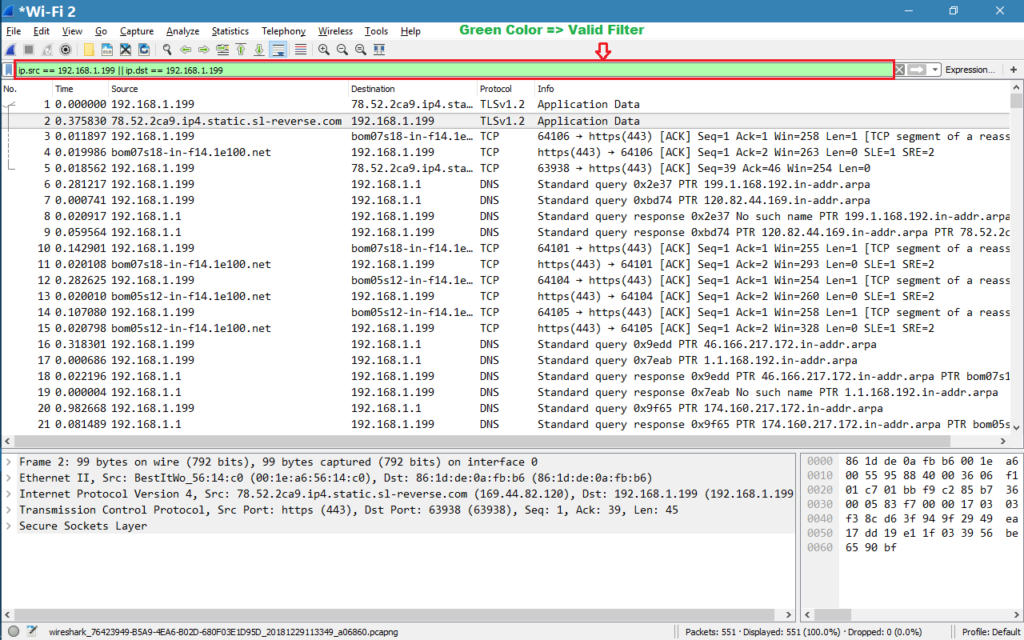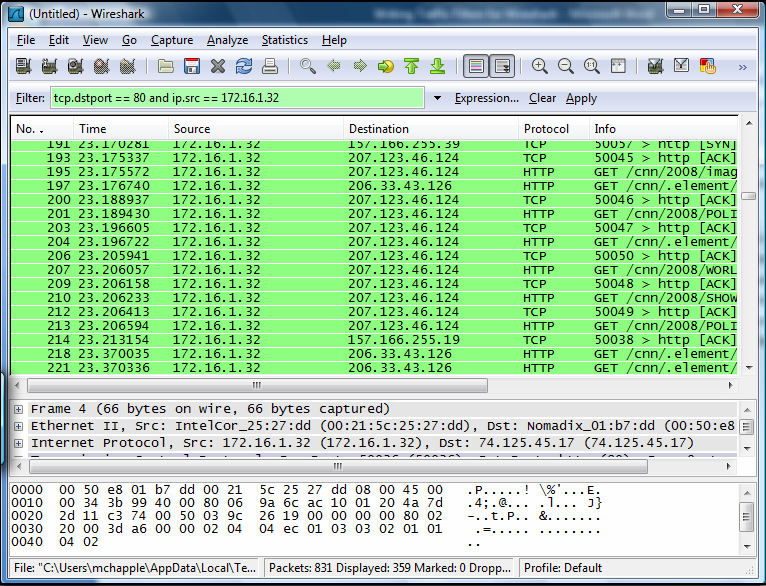

Port filter will make your analysis easy to show all packets to the selected port.

In case there is no fixed port then system uses registered or public ports. From your Wireshark Capture, write the IP Addresses and Port. Display Filtering by Protocol Example: Type the protocol in the filter box arp, http, tcp, udp, dns, ip Monitoring the Specific Ports tcp.port23 ip.addr. We can manually enter the filters in a box or select these filters from a default list. Wireshark automatically creates a display filter to filter out this TCP conversation. We can filter protocols, source, or destination IP, for a range of IP addresses, ports, or uni-cast traffic, among a long list of options. Now we put “udp.dstport = 67 || udp.dstport = 68” as Wireshark filter and see only DHCP related packets.įor port filtering in Wireshark you should know the port number. One of the advantages of Wireshark is the filtering we can make regarding the captured data. When we run only UDP through Iperf we can see both source and destination ports are used from registered/public ports.ĥ. Now we put “tcp.port = 443” as Wireshark filter and see only HTTPS packets. Now we put “udp.port = 53” as Wireshark filter and see only packets where port is 53.ģ. Here 192.168.1.6 is trying to send DNS query. Now we put “tcp.port = 80” as Wireshark filter and see only packets where port is 80.Ģ. Here 192.168.1.6 is trying to access web server where HTTP server is running. Ports 1024 to 49151 are Registered Ports.īefore we use filter in Wireshark we should know what port is used for which protocol.

In this article we will try to understand some well know ports through Wireshark analysis. To know more about filter by IP in Wireshark, please follow below link: It contains well written, well thought and well explained computer science and programming articles, quizzes and practice/competitive programming/company interview Questions. Port filtering is the way of filtering packets based on port number.


 0 kommentar(er)
0 kommentar(er)
